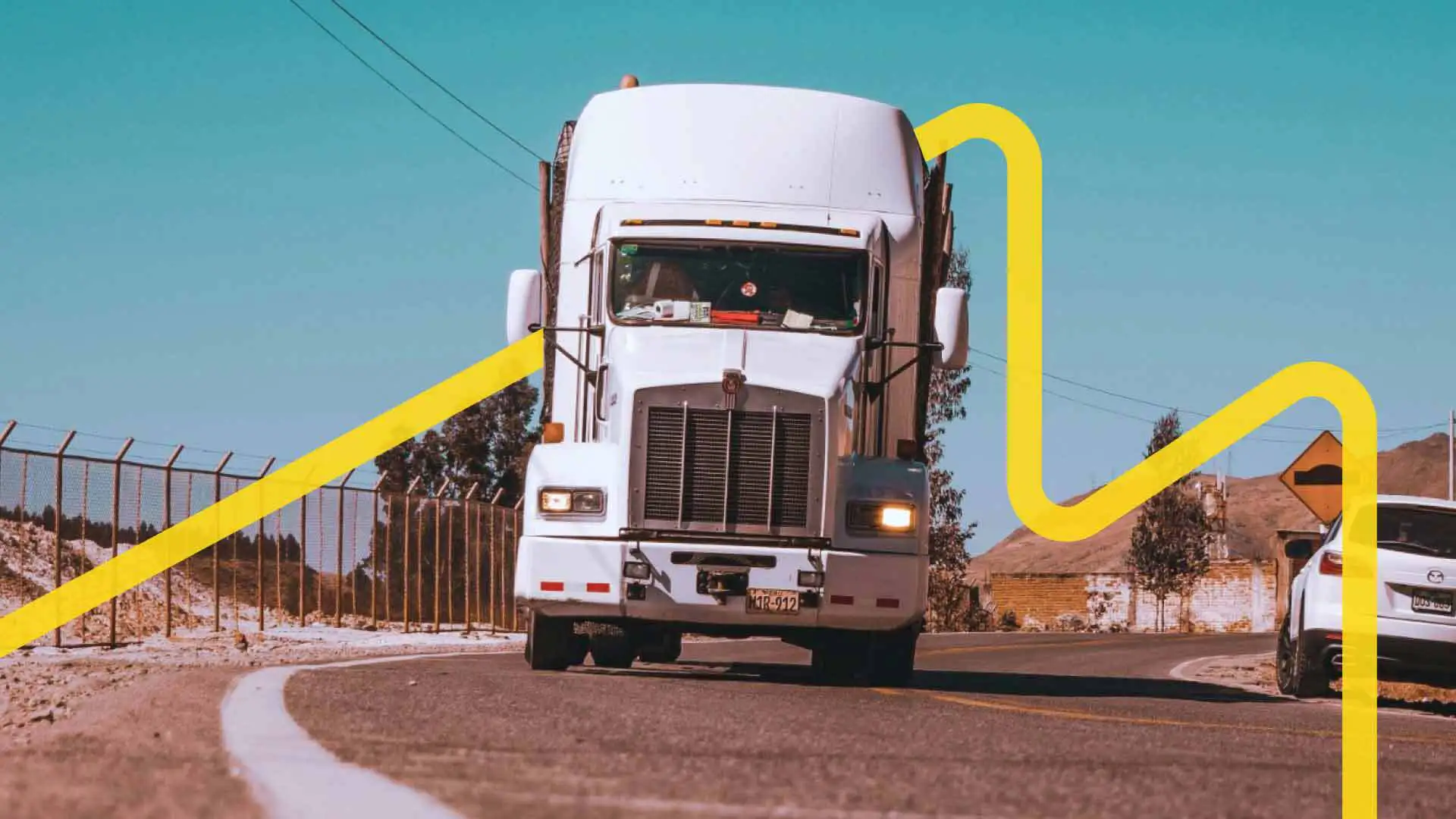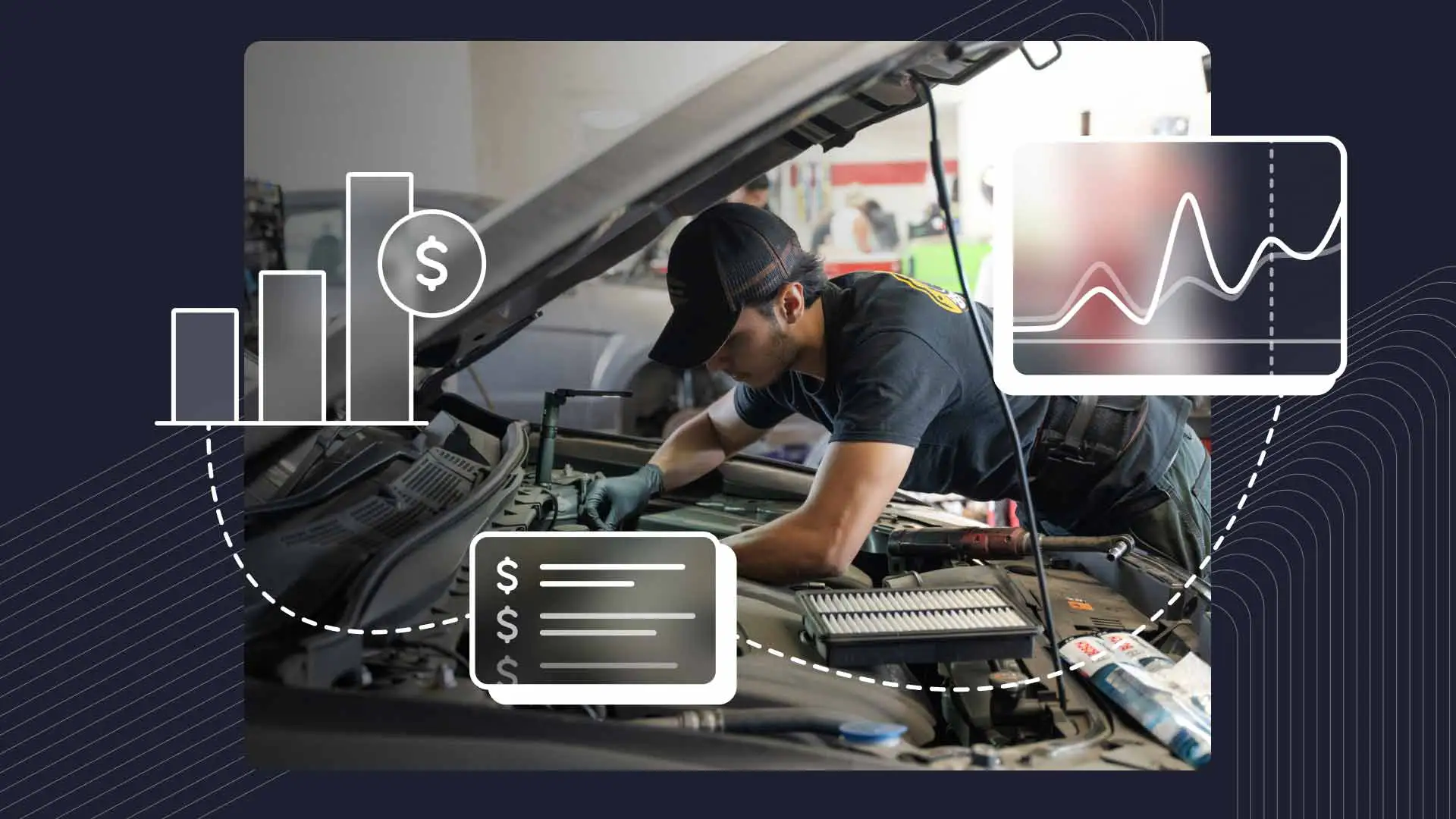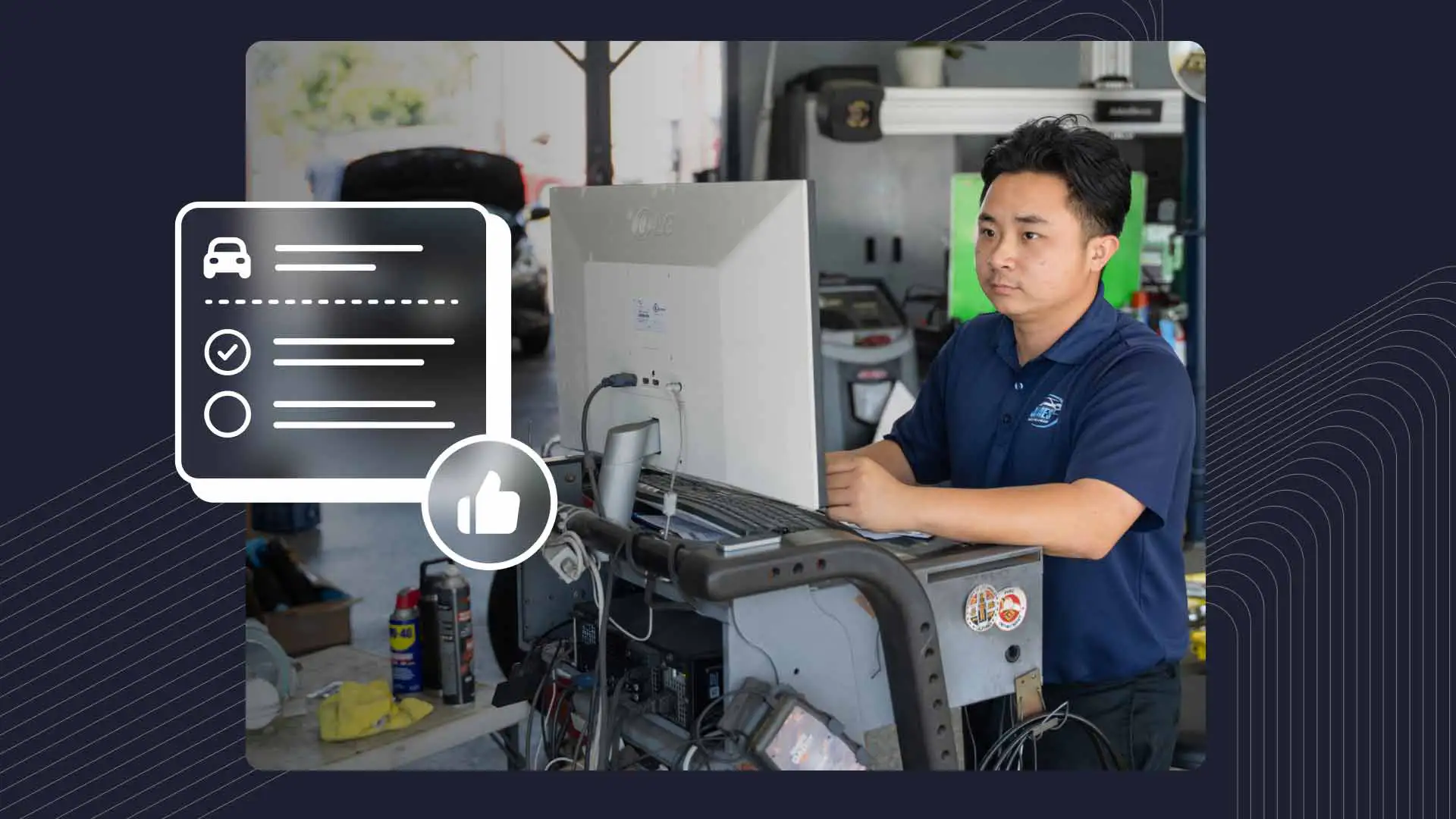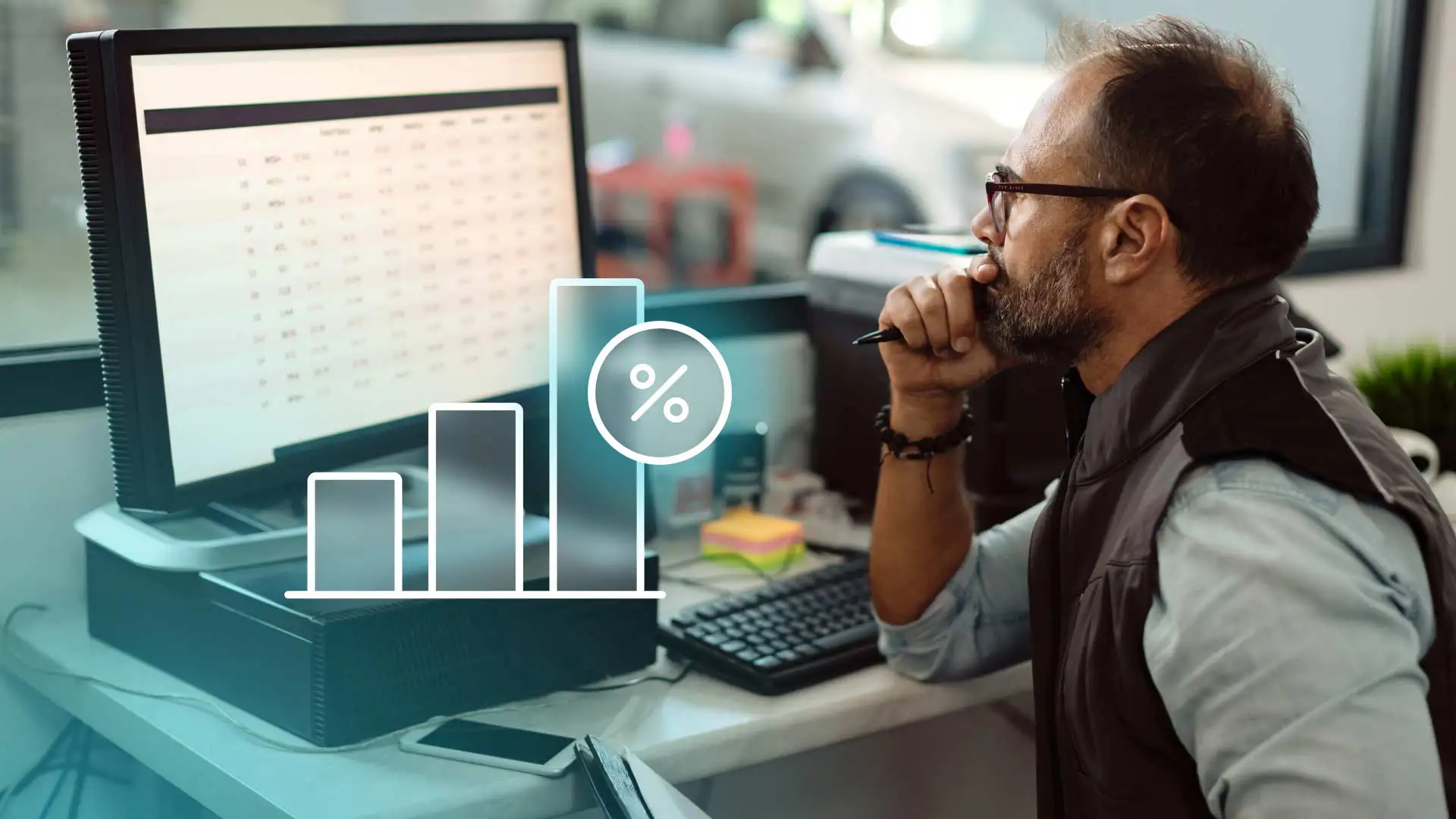California is known the world over for its warm climate, sandy beaches, Hollywood stars, and of course, those fantastic freeways.
But it’s not all sun and fun along the 405, the 110, the 5, and California’s other celebrated interstates–there are certain requirements that need to be met in order to run a business in the Golden State. For medium- and heavy-duty truck owners and operators, that means staying current on all safety-related service and repairs. This is done through what’s known as a “BIT Inspection.”
OK, so what exactly are BIT Inspections, why are they important, how do they differ from DOT requirements, and why is it a good idea for shops to become familiar with these regulations?
Demystifying BIT Inspections
Also known as a Basic Inspection of Terminals, a BIT Inspection is essentially California’s version of a federal Department of Transportation (DOT) Inspection. These 90-day checkups are designed to make sure all commercial motor vehicles (CMVs) with a gross vehicle weight of more than 10,000 lbs. are operating safely on state roads and highways.
BIT Inspections are required for all CMVs based or driven in California. They cover a number of different safety areas on commercial trucks and trailers, for example:
Steering systems
Brakes
Wheels & tires
Mirrors
Windshield wipers
Drilling a little deeper, all trucks operating in California must have what’s called a carrier identification number, or CA number, issued by the California Highway Patrol (CHP). Once you have a CA number, you’re automatically enrolled in the BIT program. The CHP, which oversees BIT, will then notify you when they’re planning to stop by for an audit. These audits are typically done twice a year, and they take about an hour to complete.
When the CHP checks for BIT compliance, it assigns a rating for different areas of the vehicle. A passing grade is “Satisfactory,” while “Unsatisfactory” means you didn’t pass. However, if a certain area didn’t pass but isn’t totally off the reservation, the CHP will let you know what needs to be fixed, and you’ll be given an opportunity to correct it within 120 days.
If problem areas aren’t fixed by the time they’re reinspected, the terminal operator can be hit with fines and subject to further inspections. Subsequent violations may result in additional fines or, in more extreme cases, vehicles being taken out of service.
How do BIT Inspections differ from their DOT counterparts? First, BITs are required every 3 months, whereas DOT is a once-a-year deal. As noted earlier, BIT is a California-specific mandate; some other states have their own versions, and others simply abide by the DOT’s inspection requirements.
In terms of what they cover, BIT and DOT inspections are very similar. They include many of the same systems and components (brakes, lights, tires, etc.) to ensure CMVs are roadworthy. And both can be conducted by certified technicians.
Much like for DOT requirements, the CHP during its visit will also review driver records, as well as vehicle maintenance and any repair records, to make sure you’re in regulatory compliance.
So wait then, if I’m only operating in California, do I need both inspections done? The short answer is no. A BIT satisfies all requirements of the DOT. As long as you’re not leaving California, you only need the BIT. But, if you’re driving through other states, it’s recommended you get the annual DOT inspection done as well.
The Technician's Role in BIT Readiness
While it may seem burdensome, the BIT program is actually a good reminder of the importance of preventative maintenance. Catching worn or defective equipment during routine checks not only satisfies CHP requirements, it also helps head off potentially expensive repairs, not to mention keeping trucks operating safely.
When conducting routine maintenance, technicians should make a point to focus on areas highlighted in the BIT Inspections: engine components, suspension, steering, front end, drivetrain, tires, wheels, hubs, axles, brake components, lighting and electrical, chassis, connecting devices, and any emergency equipment.
Techs can also take this opportunity to work closely with drivers on pre-inspection checks. Here’s why that makes a lot of sense: Before hitting the road, commercial drivers are required by federal law to fill out pre-trip inspection checklists. As luck would have it, the vast majority of items on these lists are the same as what you might find on a BIT Inspection checklist. So, you’re really killing two birds with one stone.
Techs that are schooled in state and federal compliance programs can quickly and effectively diagnose issues that, if left addressed, could otherwise jeopardize the livelihoods of commercial drivers, not to mention public safety.
The more familiar techs are with areas on the BIT list, the better able they (or you) will be to identify early warning signs during routine checks or service. It can’t hurt to keep an eye out for things like worn brake pads, malfunctioning lights, worn tire tread, or excessive play in the steering belt.
Important note: Maintaining detailed records of all service and repair work is critical for meeting BIT requirements. The CHP likes to see documentation for everything that’s been done to the truck or trailer over the last 90 days. In addition to vehicle records, they also want to confirm that drivers are licensed and have their CDLs. Want a Pro Tip? Look into electronic record keeping. It’s a great tool to keep all your receipts organized and up to date.
Beyond BIT: The Value of DOT Compliance
We mentioned that BIT and DOT inspections cover similar territory when it comes to their requirements for commercial vehicles and drivers. But beyond the fact that BIT is a 90-day state mandate and DOT is a yearly federal one, there are other areas where the two inspections differ.
Generally speaking, DOT rules cover a broader range of activity. In fact, if you were drawing up a DOT Compliance checklist, it would include several different areas on Driver Qualifications, as well as Hours of Service Compliance, Vehicle Inspections and Maintenance, Drug and Alcohol Screening, Hazardous Materials Regulations (HMR) Compliance, Licenses and Permits, and a host of other requirements like proof of liability insurance and fuel tax records.
So yes, it’s a lot. But in the same way that staying on top of BIT Inspections helps keep fleets in top running condition, compliance with DOT regulations contributes to the overall health of commercial vehicles. Think of it as an early-detection system that helps you identify and address any potential problem areas before they have a chance to escalate.
For technicians, this is an opportunity to alert drivers and/or fleet managers ahead of time about issues that could result in DOT violations. For instance, any parts or accessories welded to a truck’s frame or chassis must comply with the manufacturer’s recommendations. If your tech observes a suspicious weld, or notices a broken or missing bracket that’s meant to secure the cab or the body of the vehicle to the frame, he or she could note it.
Techs can also share any concerns they may have over things like excess vehicle weight, or whether equipment used to secure cargo is strong enough or in optimal condition.
Another Pro Tip for shop owners: Invest in proven heavy-duty truck repair software. Shopmonkey’s version is easy to use and highly customizable, and utilizes a cloud-based platform that lets managers run their shop from anywhere. It also includes next-level tools and features like real-time communications with staff, streamlined inventory management, plus appointment reminders and service recommendations for customers. Tapping into its advanced record-keeping capabilities is like having your own DOT Compliance software at the ready.
Building a Culture of Compliance
Fostering a culture of compliance with BIT and DOT regulations not only keeps your operation aboveboard, it also contributes to a reputable, professional environment. Techs that understand and are trained on regulatory requirements will be better equipped to handle their duties and communicate areas of concern with commercial vehicle operators.
To facilitate this, managers should clearly explain to employees what their responsibilities are and all the procedures they need to follow in order to ensure BIT or DOT compliance. If that means posting notices around the shop, do it. If you have to hold regular meetings to review and/or implement protocols, do it. If you want to put together a compliance manual and distribute it to your team… Well, you get the picture.
The ultimate goal is to reduce risks and potential penalties for customers while also promoting a safe and professional workplace for your team. Techs are often at the front lines of these efforts, and arming them with the knowledge, skills, and support they need to perform this type of work is just good business, inside and out.
Moving Forward
At their core, BIT Inspections and DOT requirements are designed to ensure commercial vehicles are safe for highway travel.
Technicians play a key role in conducting these inspections, identifying potential problem areas and making–and documenting–any needed repairs. When done correctly, their work prevents violations, accidents, and/or costly fixes, ultimately keeping commercial operators running smoothly and on schedule.
Techs that are schooled in these state and federal compliance programs can quickly and effectively diagnose issues that, if left addressed, could otherwise jeopardize the livelihoods of commercial drivers, not to mention public safety.
The good news is there’s more than ample resources available to help technicians learn and stay informed about BIT and DOT regulations. For California operators, a good place to start is the CHP’s Introduction to BIT that provides an overview of the program, defines some terms, and explains what’s required for compliance. A solid starting point for DOT information is the Federal Motor Carrier Safety Administration, which is loaded with resources and just about anything else you’d want to know about commercial vehicle safety and regulation.
As we noted earlier, when it comes to performing BIT or DOT-related inspections, Shopmonkey offers a comprehensive solution that streamlines the workflow for medium- and heavy-duty truck service shops. [diesel operators]. Take a look at the features, and then book a demo to learn even more about our truck repair shop software.
BONUS: Sample BIT Inspection Checklist for Techs
In California, commercial motor vehicles that weigh over 10,000 lbs. must undergo checkups every 90 days to ensure they are safe enough to travel on state roadways. These are known as Basic Inspection of Terminals, or BIT Inspections, and they can be provided by certified service technicians. To give you an idea of what areas of the vehicle state regulators are interested in, and what techs should include in their BIT Inspections, here is a sample checklist:
Source: Pacific Commercial Truck Solutions




